Carnival ended a week ago. Even this year I met enthusiastic visitors, some for the first time in Venice during these days, from Europe, Asia and America. Figures talk about 80,000 tourists in st Mark’s square for its opening event, the Flight of the Angel: (official video)
It is mainly European visitors that have become familiar with our Carnival and choose these days of the year to visit Venice: some bring their own costumes, some hire them in one of the ateliers of the city and wear them at parties in palaces on the Grand Canal or just walk around the city attracting the curiosity of tourists and especially that of photographers… here I am counting at least ten cameras 🙂
And here are two photos I took this year:
the other ones are here:
https://www.facebook.com/media/set/?set=a.814668088569407.1073741825.172076022828620&type=1
When getting into the history of the Venetian mask, especially to the 18th century, at a time when the entertainment industry was extremely varied and Carnival lasted several months, it was really different. Here are two paintings I love by Francesco Guardi and Pietro Longhi showing Venetians or visitors of the time wearing the Bauta and the Moretta, just to mention the most common masks:
Not to speak of the masks used in the theatre tradition of the Commedia dell’Arte, such as Arlecchino, Brighella, Colombina you would see perform in the theatres or open air stages. Or not to mention the more disquieting ones, such as the Gnaga or Pulcinella, with their mixture of irreverency, disturbing deformity, against all kinds of conformism: a real hymn to revolutioning all standard behaviours and giving vent to hidden desires and feelings of social revenge… Giandomenico Tiepolo really expressed the fear and the attraction towards all this:
The tradition of Carnival was rediscovered here in Venice in the early 1980s. It was then not just a tourist attraction to turn a relatively quiet time of the year into a tourist high season peak: I remember inventing costumes, putting fun make up on our face, dancing till late in st Mark’s square, enjoying ourselves while the loud music injected energy! And I remember in particular the irreverency of the masks by Giorgio Spiller (teaching at the art school), provoking the reaction of the mayor of the city and the police: imagine meeting a bearded man with a pink, quite realistic gigantic vulva all around his face accompanied by another 6 feet tall man dressed as a huge penis walking around the calle in Venice… The police thought they had to do something, they arrested the man and took the hood away 😉 Here is a fun photo by Mark Smith (Carnival, 1982):
(source: http://87.118.80.189/iantichivenezia/storia-de-i-antichi/giorgio-spiller)
Behind all the show, expert artisans started making costumes and masks in small workshops in the city: real artists that in these years have contributed to this revival, such as Guerrino Lovato, Carlo Setti, Stefano Gottardo and some more.
Guerrino’s workshop was a magic room. There was no fixed idea of what a mask should look like. When you entered his place near Campo Santa Margherita, any kind, any creation would be there and Guerrino looked like an artist of the ancient times to me, living in his world of papermaché and plaster. When he left Venice some years ago in open dispute against all the fake mask shops that had opened in the city and significantly decided to found a museum of the mask in Malo, near Vicenza, he placed a letter box outside his workshop to collect messages as a bottle in the water reverse (confettis for all parties!). Every time I pass by his empty, abandoned shop I feel upset and wonder about the missed opportunity of a museum of Carnival in Venice…
Some artisans are still here, contrasting the apparent triumphant lack of originality and ideas.
Carlo Setti for instance: coming from the school of Fine Arts, he has created leather masks for actors of the Commedia dell’Arte for over 30 years. He gets the leather from the best leather artisans on the mainland near the Brenta Riviera, nails on the wooden mould the wet leather and with lots of patience (two days time for a mask), he gives life to what actors and actresses need on the stage to shock, surprise, entertain the audience. You can see him through the window of his shop in San Marco working, completely absorbed and detached from the world, hidden behind his creations.
Or Stefano Gottardo with his sister Emanuela and Eliana Giordano. They started more than 35 years ago and you can pass by their workshop in Castello and get enchanted while watching them placing the blue paper in wool on plaster casts, with their fingers wet in the white glue, or with scissors cutting out the eyes of the mask, or placing gold leaf or again with fine brushes painting the rich details… Here you understand how a mask is the result of historical research and features an originality you can recognize among the vast conformism available in the city. And not just masks in papermaché, but also ceramics and paintings…
I hope no one will get upset if I don’t list all the other artisans that with honesty, hard work and creativity keep the tradition alive. But I wonder how many still will be the people visiting Venice that wonder what the significance of the mask is while watching the pale copy of what the reality could be. It’s so offensive towards tourists to think they are searching for junk. Why then not zoning the districts and encouraging all the shops selling what it’s made in Venice? But especially, let’s not waste a tradition Venetians can only be proud of.
by Luisella Romeo
registered tourist guide in Venice, Italy
www.seevenice.it








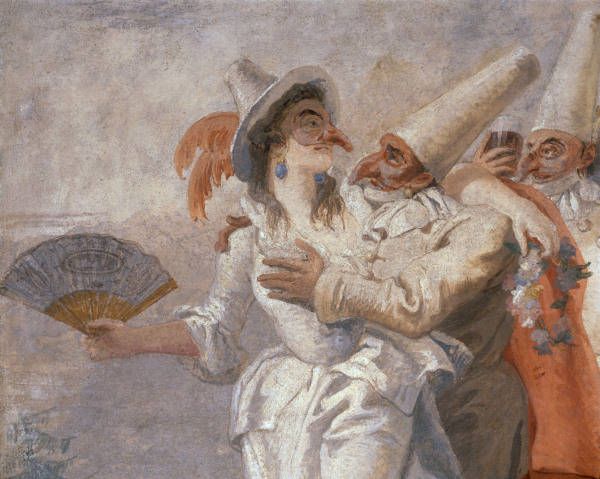
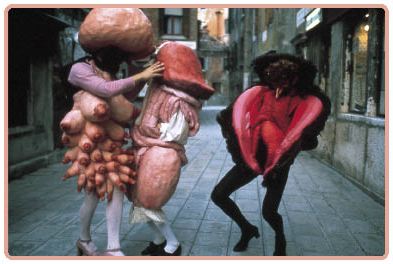

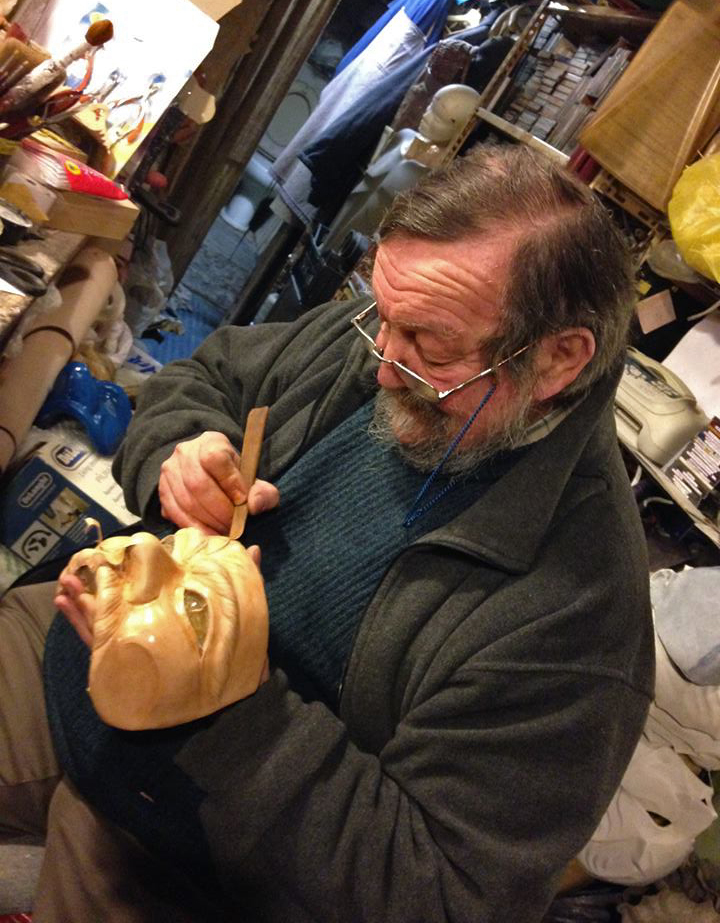
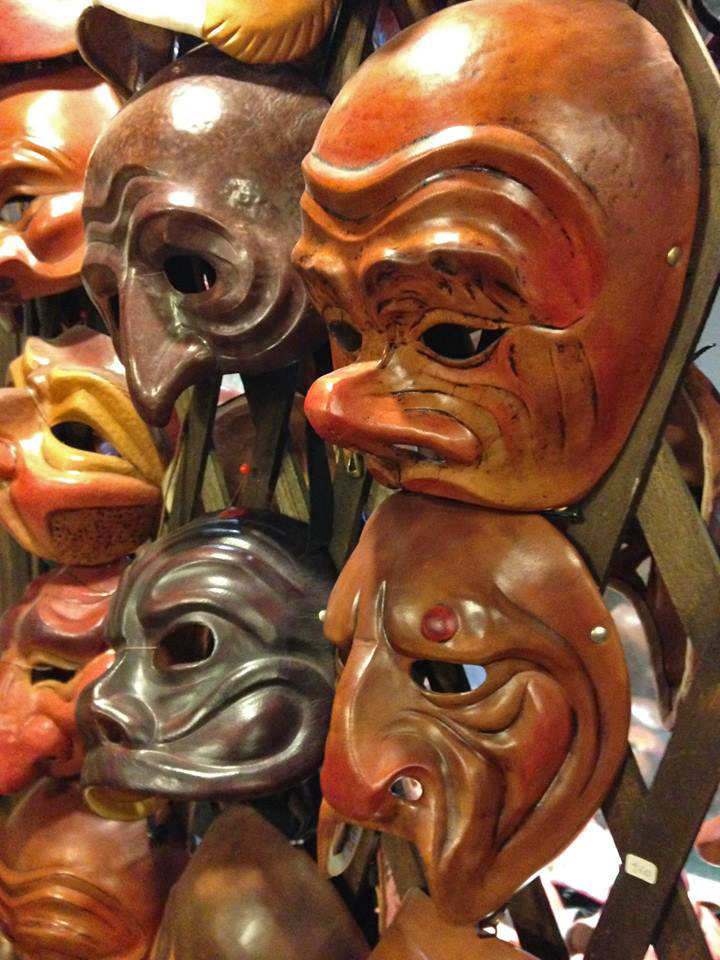




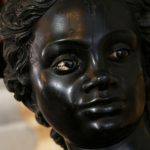




Luisella – you did it again! Such a nice piece of writing and history of Carnival in Venice.
Thank you, Rob! At the moment there is a discussion in regards to the standstalls at the Rialto selling the “junk” not even produced here and I really hope there will soon be some zoning approach and space for real artisans or even souvenirs with a local flavour!
Thanks for sharing this, Luisella. Really enjoy your blog!
Ray, grazie!!! I also enjoy writing 🙂
All home made, thank you!!! I am really glad you like it 🙂
I had the great good fortune of asking Luisella for a recommendation of a shop from which to buy a Carnival mask. I have wanted such a mask for close to 15 years since first seeing one at (of all places) the Italian Pavilion at the World Showcase at EPCOT in Disney World.
I explained to Luisella that I wanted a genuine mask made by a local artisan because it was important to me to support local artists, and she suggested I go to the Giordano’s shop, and was kind enough to take us there as she was going in that direction. I could not be happier to have taken her suggestion! The Giordano’s shop has so many stunning masks that I could have easily spent much, much more than I did. I ended up leaving with three genuine Carnival masks, and regrets I couldn’t fit more in my carry-on!
Thank you Luisella for being such a wonderful tour guide and advocate for your fellow Venetians! You made our time in Venice come alive with your very informative and humorous descriptions during our tours, and I would tell anyone going to Venice to seek you out!
Thank you, so much, for leaving this message! The workshop you mention, Paper Maché is run by Stefano Gottardo and his team, including his wife and his sister. The right name is Gottardo 🙂 I am so happy you enjoyed Venice and I hope we will have a chance to meet again!
Thank you for catching and correcting my error, Luisella! Stefano and his family deserve to be properly recognized for their wonderful artistry and I’m sorry I got it wrong in my post…
We so appreciated and enjoyed our tour of Venice with you and hope to be able to return to Italy!
Thank you for recommending Stefano’s and his team’s work, they are all amazing!!! And no worry, it happens to forget the exact name when it comes to a foreign language. Once more, thank you!!!